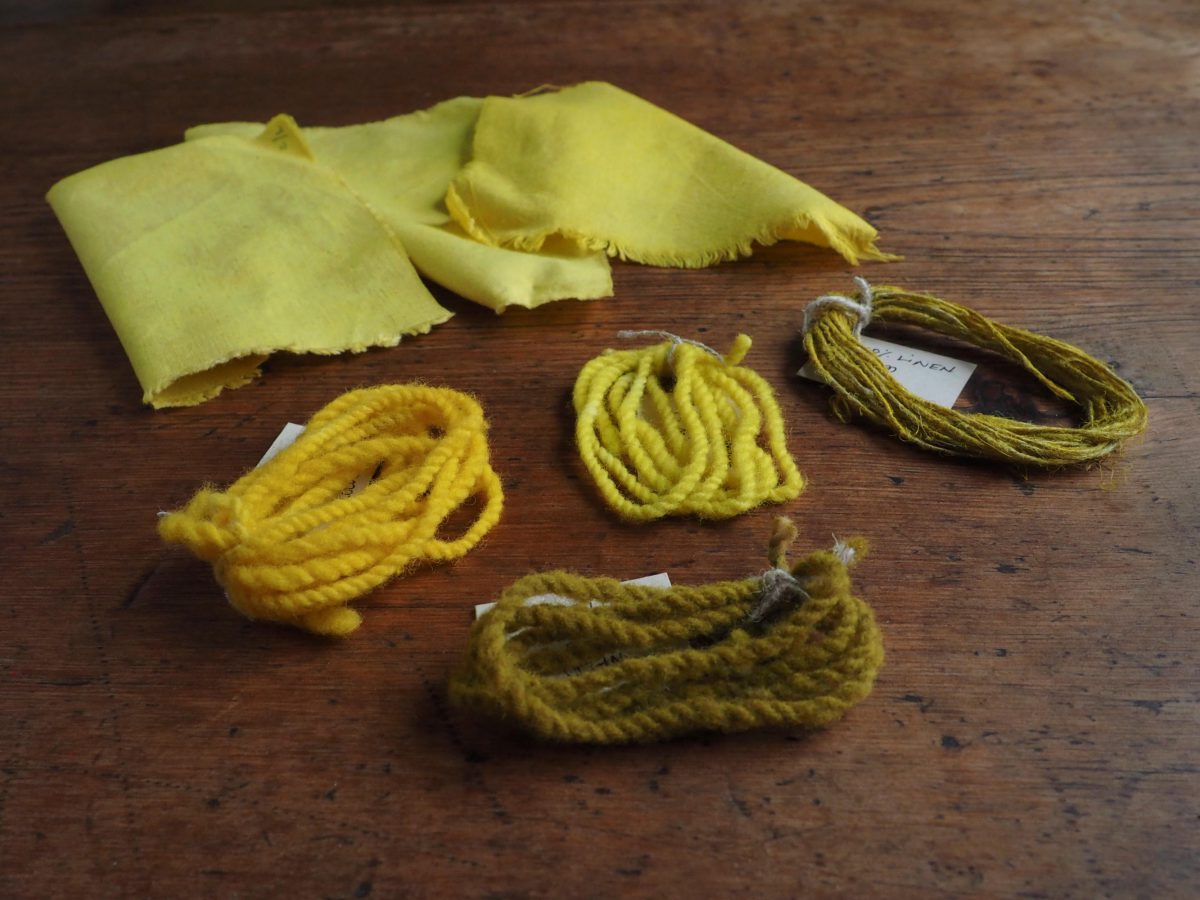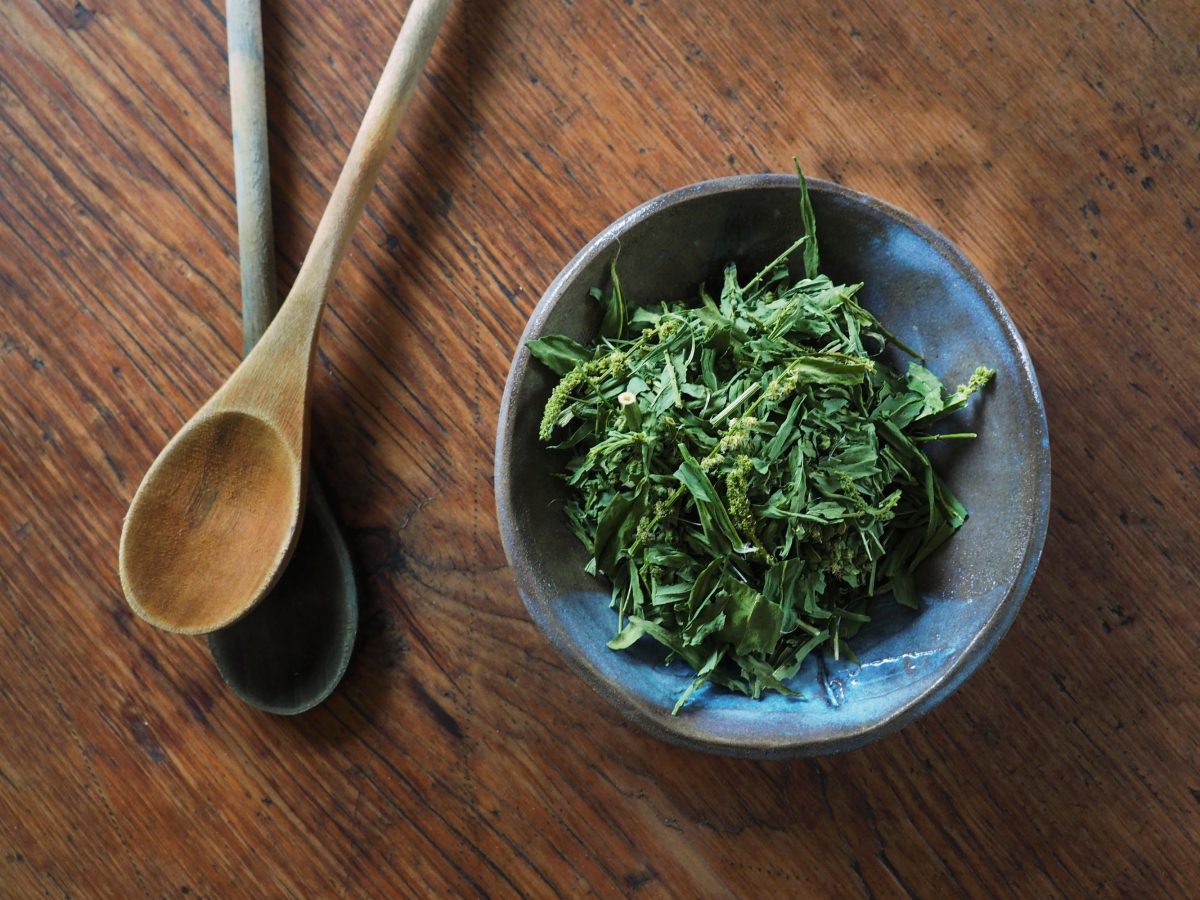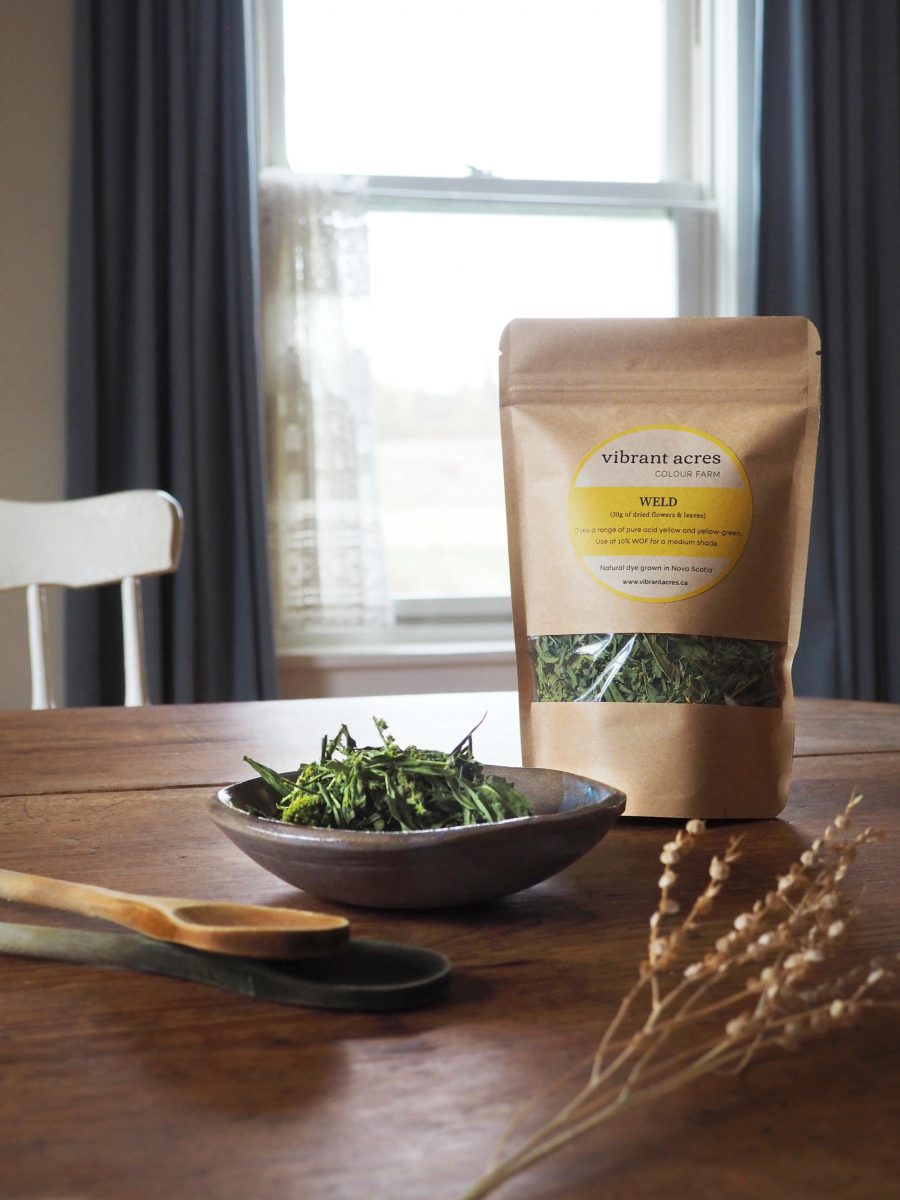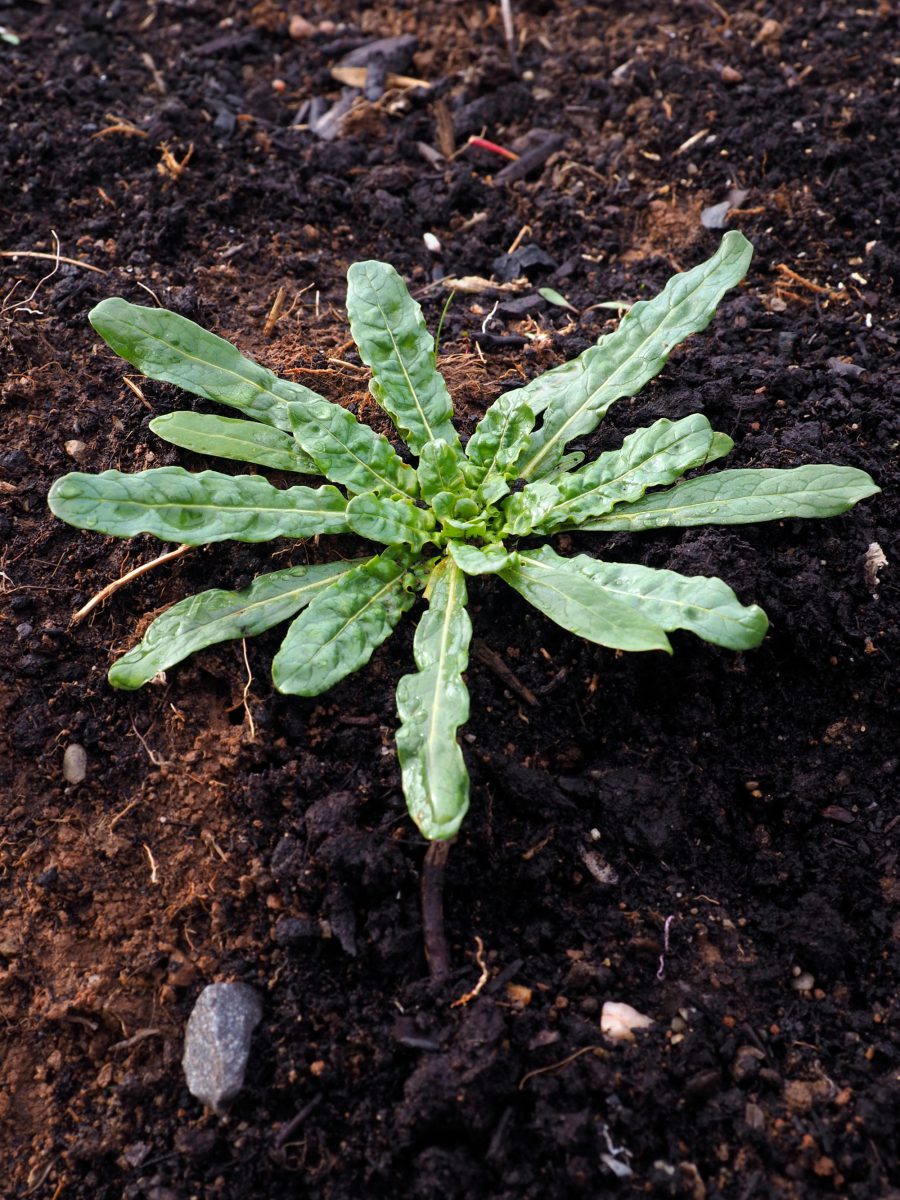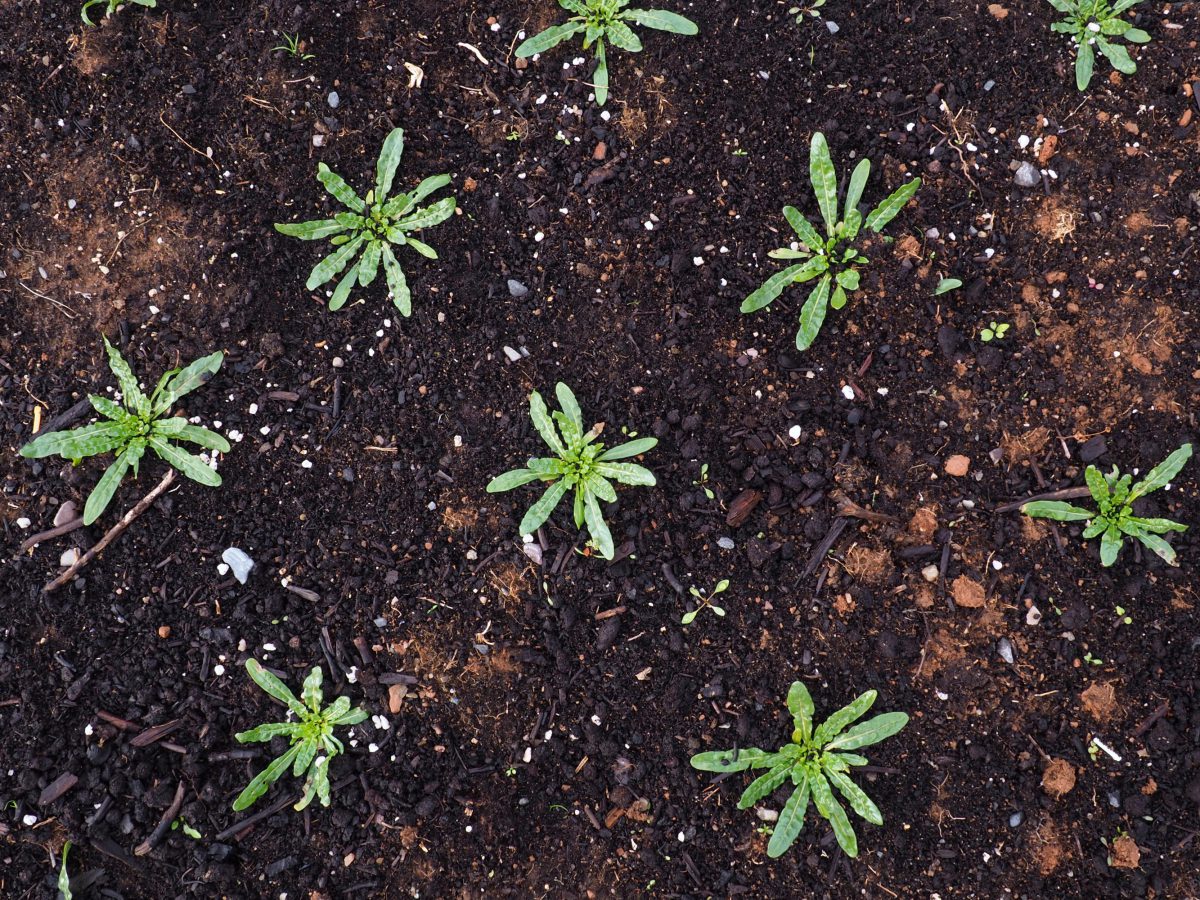Reseda luteola
Weld produces a small rosette of leaves in its first year and shoots up tall spires with clusters of tiny yellow-white flowers in its second year. This rather unremarkable looking plant creates a stunningly bright almost neon yellow dye. All parts of the plant make dye, but the leaves and flowers produce the strongest dye and are what we harvest and dry on the farm. Weld is one of the oldest, purest, and most colourfast yellow dyes and is excellent for overdyeing with other colours to produce teals and greens. It was most famously combined with woad to create the green dye of Robin Hood’s garments.
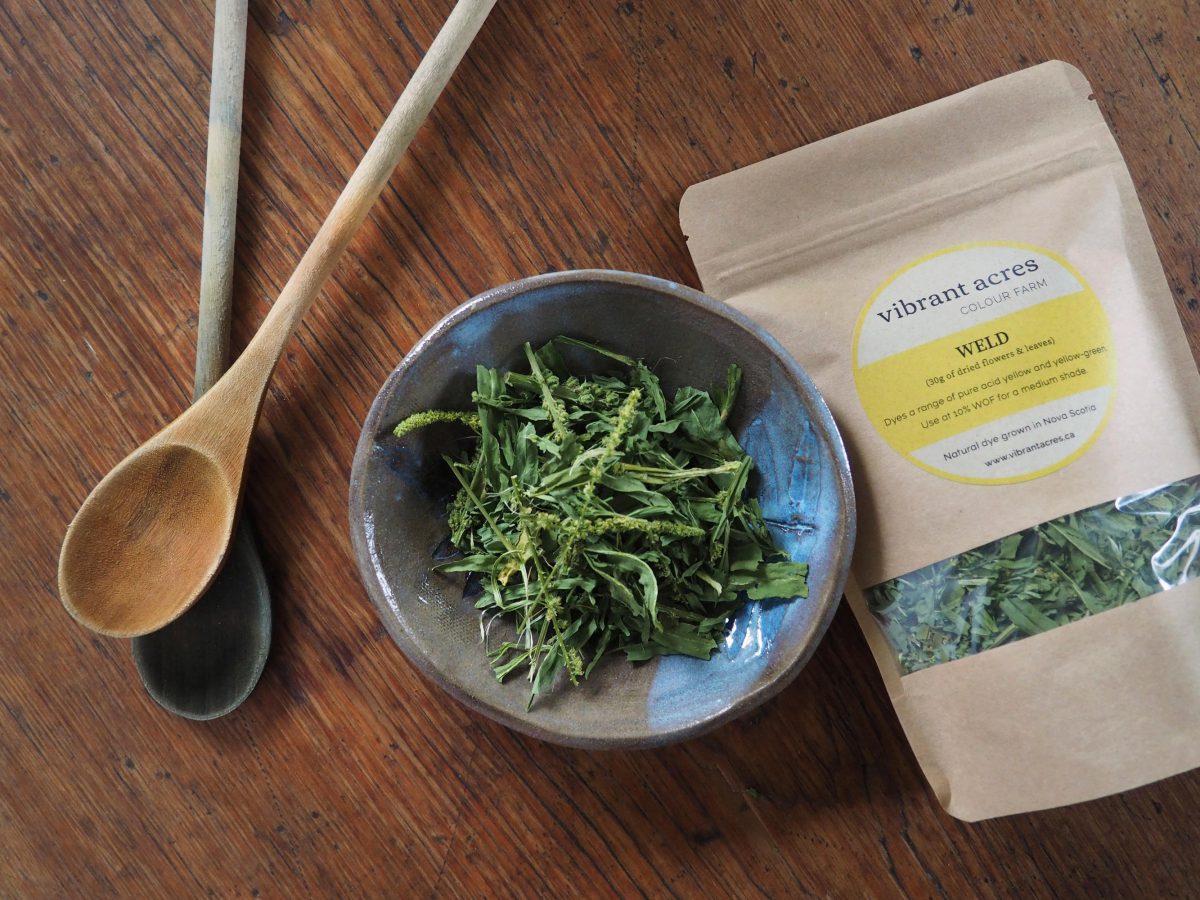
Key Dye Colours: Pure cool yellow, yellow-green
Dye Process: Colour is extracted by bringing to a gentle simmer until the water turns bright yellow. Harder water produces a clearer colour – a pinch of washing soda or an antacid tablet added to the dye pot can help to achieve this. Boiling water can be poured over the plant material and left to sit overnight before simmering to further enhance the colour. This is less relevant with our dye material as we only harvest the softer leaf and flower parts and not the woodier stems.
Weight of Fibre (WOF): Use at 10% for a medium shade. For a darker colour, use more; for a lighter colour, use less. A small bag will dye ~300g of fibre and a large bag will dye ~1kg of fibre. A typical wool skein is 100g.
Key Modifiers: Iron produces a bright olive green. Overdyeing with woad or indigo produces a range of bright, pure greens and teals.
Washfastness: Excellent.
Lightfastness: Excellent.
Overall Colourfastness: Excellent.
Natural colour grown with care
This natural plant dye was grown with care on our small farm in Nova Scotia’s Annapolis Valley. All of our dye plant material is dried on site immediately after harvest to preserve quality and maximum vibrancy of colour.
Natural dyes can only be used on natural fibres (cotton, linen, wool, bamboo, hemp, silk). For best results, natural fibres should be pre-prepared using a mordant or tannin before dyeing. Natural dyes and mordants are available in our online store.
Natural dyes create unique living colours that will evolve and wear over time as they are washed, worn, and loved creating colours and garments that are alive, telling the story of their use. While they are not as consistently repeatable or as durable as many synthetic dyes, they are far more environmentally friendly and, in our opinion, absolutely unmatched in magic and beauty. If you are new to natural dyes, we have a free guide to getting started with natural dyes.
